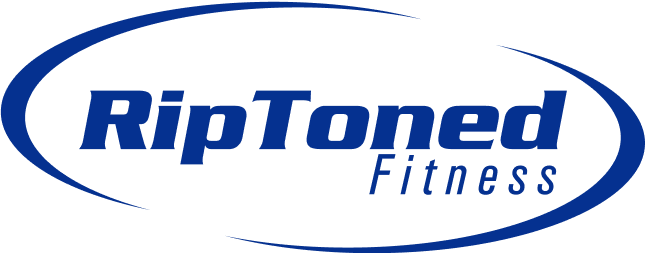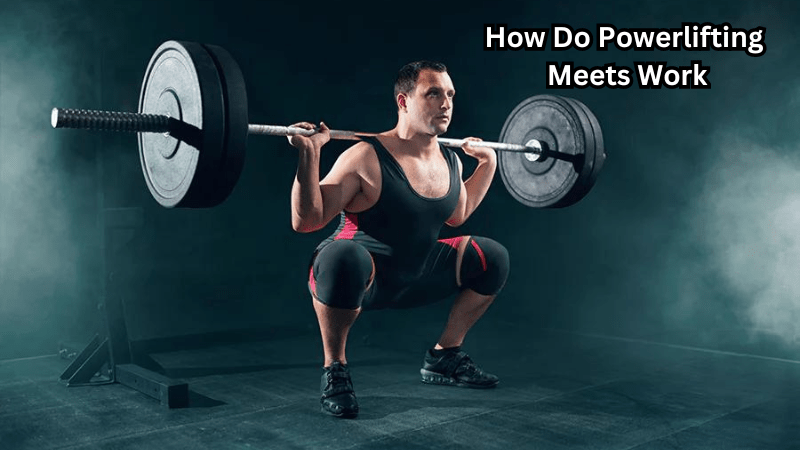
How Do Powerlifting Meets Work
Mark PasayShare
Powerlifting is a strength sport where athletes perform three main lifts: the squat, bench press, and deadlift. Each lift tests different muscle groups and overall power, making it a comprehensive display of strength.
Understanding how powerlifting meets work is crucial for both participants and enthusiasts. These meetings are meticulously structured events that require proper preparation, adherence to rules, and strategic performance. From registration and weigh-ins to the lifts themselves and the judging criteria, each aspect plays a vital role in the athlete's success.
This guide will walk you through every stage of a powerlifting meet, ensuring you're well-informed and ready to participate or support effectively.
Definition of Powerlifting
Powerlifting is a strength sport that involves lifting the heaviest weight possible in three main lifts: squat, bench press, and deadlift.
Unlike Olympic weightlifting, which focuses on explosive movements, powerlifting tests an athlete's overall strength and power. It requires a combination of physical strength, proper technique, mental fortitude, and strategic training to attain success.
There are different categories of powerlifting, including raw (no supportive gear) and equipped (with supportive gear). Each category has specific rules and regulations that participants must adhere to.
At the heart of powerlifting is competition. Athletes compete against each other in their respective weight classes, with the ultimate goal of lifting more weight than anyone else in their division.
What is a Powerlifting Meet?
A powerlifting meet is a competition where athletes showcase their strength by performing the three main lifts: squat, bench press, and deadlift. The events are usually organized by powerlifting federations or organizations, and each has its set of rules and regulations. These federations ensure that meets are conducted in a standardized manner, ensuring fair and equal judging for all athletes.
Aside from individual competitors, there are also team competitions in powerlifting meets where teams represent different countries or regions.
Types of Powerlifting Meets
Powerlifting can be categorized into three main types: local, national, and international. Local meets are usually smaller in scale and often organized by regional powerlifting organizations. These meets provide an excellent opportunity for novice lifters to gain experience and qualify for higher-level competitions.
National meets are more significant events that attract top lifters from around the country. They serve as qualifiers for international competitions and are highly competitive. Participants in national meets must meet certain performance standards to compete.
International powerlifting meets bring together elite athletes from different countries to compete against each other. The most prestigious of these is the World Championships organized by the International Powerlifting Federation (IPF). Only a select number of athletes qualify for these meets, and they represent the pinnacle of powerlifting achievement.
Understanding Weight Classes and Divisions
One of the defining aspects of powerlifting is its weight classes and divisions. These categories ensure fair competition by grouping athletes with similar body weights together. The current IPF weight classes are:
- Men: 59kg, 66kg, 74kg, 83kg, 93kg, 105kg, 120kg, and +120 kg
- Women: 47kg, 52kg, 57kg, 63kg, 72kg,84 kg, and +84 kg
Each athlete must weigh in before competing to ensure they fall within their designated weight class. Failure to meet the weight requirements can result in disqualification. Body weight also plays a role in determining overall winners, as it is factored into a formula that calculates an athlete's powerlifting total.
Additionally, there are also age divisions in powerlifting, which include sub-juniors (14-18 years), juniors (19-23 years), open (24 years and above), masters (40+ years), and grandmasters (60+ years). These divisions allow for fair competition among athletes of similar age groups.
How Do Powerlifting Meets Work
Powerlifting meets involve several stages, from registration and weigh-ins to the actual lifting of weights and judging. Here's a breakdown of how it all works:
Registration
The first step in participating in a powerlifting meet is to register for the event. Registrations are typically done online through the organization's website or a designated representative. Athletes must provide personal details such as name, age, weight class, and other necessary information. They also need to choose which category they will be competing in: raw or equipped.
Weigh-Ins
Before the competition begins, athletes must go through a mandatory weigh-in process. This ensures that they are accurately competing in their respective weight classes. If an athlete is not within their designated weight class, they may be disqualified or asked to compete in a higher weight class.
Rules and Regulations
Powerlifting meets are strictly governed by rules and regulations set by the organizing federation. These rules cover everything from equipment requirements and acceptable behavior to proper lifting techniques and judging criteria. It's crucial for participants to familiarize themselves with these rules before the competition to avoid disqualification.
Warm-Up Area
Athletes are given access to a warm-up area where they can prepare for their lifts. This area usually has racks, benches, and weights similar to those used in the actual competition. Athletes use this time to perform lighter lifts, get their bodies warmed up, and mentally prepare for their lifts.
The Lifts
Each athlete is given three attempts to lift the heaviest weight possible in each of the three main lifts: squat, bench press, and deadlift. These lifts must be performed in order, with the squat being first, followed by bench press and then deadlift.
For a lift to count as successful, an athlete must complete the entire range of motion of the lift while maintaining control and proper form. Judges will be watching closely to ensure that all rules are followed.
Related Products
After completing all three lifts, an athlete's total score is calculated by adding together their best attempt from each lift. This final score determines their ranking and placement in their respective weight class.
Competition Day
Competition day at a powerlifting meet is an exciting and nerve-wracking experience for athletes. It's the culmination of months of training, preparation, and dedication. The atmosphere is intense as competitors push themselves to their limits in pursuit of personal records and victory.
Aside from individual performances, competition day also involves team events where countries or regions compete against each other. This adds an extra level of camaraderie and support among participants.
Awards and Recognition
At the end of the competition, awards and recognition ceremonies are held to celebrate the achievements of athletes. Trophies or medals are typically awarded to top performers in each weight class, as well as to overall winners. These ceremonies also provide an opportunity for athletes to show good sportsmanship and support their fellow competitors.
These are the basics of how powerlifting meets work. At its core, it's a test of strength, technique, and mental fortitude. It's a sport that requires dedication, discipline, and hard work, but the rewards of competing at a meet can be immeasurable.
What are the Post-Meet Activities?
After the competition, athletes usually have a few days to recover and rest before resuming their training. Some may experience post-meet blues as they come down from the adrenaline rush of competing. To cope with this, many powerlifters engage in activities such as physical therapy, light workouts, or spending time with friends and family.
Another essential post-meet activity is self-reflection and analysis. Athletes often review their performance and assess areas where they can improve for future competitions. They also set new goals and plan out their training regimen accordingly.
Powerlifting meets also offer opportunities for building connections within the powerlifting community. Many lifters form strong bonds with fellow competitors, coaches, and judges during these events. They can exchange training tips, share experiences, and support each other's progress in the sport.
What Are the Considerations for a First Powerlifting Competition?
If you're considering participating in your first powerlifting competition, here are a few things to keep in mind:
- Training: Ensure that you have a solid training program in place leading up to the meeting. This may involve working with a coach or following a reputable training plan.
- Equipment: Make sure you have all the necessary equipment and clothing required for the competition. This includes approved lifting belts, shoes, and attire.
- Nutrition and Hydration: Proper nutrition and hydration play a crucial role in performance. Make sure you fuel your body with the right nutrients before and during the competition.
- Mental Preparation: Powerlifting requires not only physical strength but also mental fortitude. Practice visualization techniques and positive self-talk to prepare for the competition.
- Support System: Having a support system of friends, family, or fellow lifters can make a significant difference in your overall experience. They can provide encouragement and accountability throughout your training and on competition day.
Participating in a powerlifting meet may seem intimidating at first, but it can be an incredibly rewarding experience. It offers opportunities for personal growth, camaraderie within the community, and the chance to push yourself beyond your limits.
What Are the Most Common Mistakes Beginners Make?
As with any sport, beginners may make mistakes when first starting in powerlifting. Here are some of the most common ones to avoid:
- Lack of proper form: Good technique is crucial in powerlifting to avoid injury and maximize performance. Beginners should focus on learning and practicing proper form before attempting heavier weights.
- Neglecting accessory exercises: Many beginners may solely focus on the three main lifts (squat, bench press, deadlift) and neglect accessory exercises that can help improve their overall strength and prevent muscle imbalances.
- Overtraining: It's essential to have a balanced training program that allows for adequate rest and recovery time. Overtraining can lead to burnout injuries and hinder progress.
- Ignoring nutrition: Nutrition is a crucial aspect of powerlifting, as it can significantly impact performance and recovery. Beginners should educate themselves on proper nutrition for strength sports and fuel their bodies accordingly.
- Not seeking guidance: It's always helpful to seek guidance from experienced lifters or coaches when starting in powerlifting. They can provide valuable insights, tips, and support throughout your journey in the sport.
Powerlifting competition consists of more than just lifting heavy weights. It involves proper training, nutrition, mental preparation, and support from the community. Powerlifting competitions offer a unique experience that allows athletes to push their limits, connect with others in the sport, and celebrate their achievements.
FAQs
What are the competition lifts performed at a powerlifting meet?
At a powerlifting meet, the three main competition lifts are the squat, bench press, and deadlift. Each lifter performs these lifts on the competition platform with the goal of lifting the maximum weight possible across all three events.
How does the competition platform work during a powerlifting meet?
The competition platform is where all lifters perform their competition lifts. Each lifter is given three attempts per lift—squat, bench press, and deadlift—using the same weight or progressively heavier weights. The best successful lift in each category is recorded as the lifter’s official score.
What role does USA Powerlifting play in national championships?
USA Powerlifting is the governing body that oversees powerlifting competitions, including national championships. They set the rules and regulations for how meets are conducted, ensuring fairness and consistency across all events, from local competitions to national championships.
Can I use wrist wraps during my lifts at a powerlifting meet?
Yes, wrist wraps are commonly used in powerlifting meets to provide additional support during the squat and bench press. However, the use of wrist wraps and other equipment must comply with USA Powerlifting’s rules, so be sure to check their guidelines before the competition.
Conclusion
Understanding how powerlifting meets work equips athletes and fans with the knowledge to fully engage in the sport.
From the initial registration and weigh-ins to performing the squat, bench press, and deadlift, each element is crucial for a successful meet. Adhering to the rules, strategic preparation, and knowing the scoring system ensure a rewarding experience.
Powerlifting meets are not just about showcasing strength but also about discipline, sportsmanship, and community. Whether you're an aspiring lifter or a supportive spectator, being well-informed enhances the experience. Embrace the challenge, respect the sport's intricacies, and take part in the thrilling world of powerlifting meets.

Related Posts
-
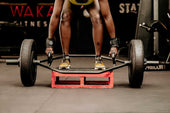
Unlock Your Strength Potential: Conquer Weak Grip Strength Now
...
-
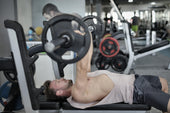
Bench Press to Success - Mastering your form
...
-
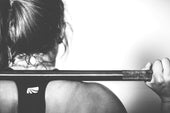
5 Tips for Women to Build Lean Muscle Tone in 2024
...
-

How to Get the Most Out of a Lifting Session
...
-

Working Out Under the Weather
...
-
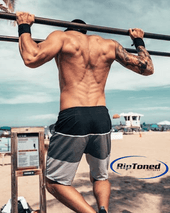
The Lesser-known Benefits of Weightlifting
...
-

How Weight Training Supports Immune Health
...
-

The History of Weightlifting
...
-

Rest up to build up
...
-
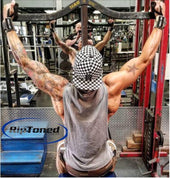
4 Tips to Improve Lifting Gains The Right Way
...
-
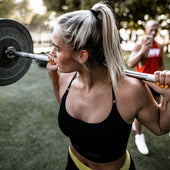
4 Tips to Prevent Training Injuries
...
-
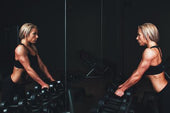
Top 3 Work Out Myths EXPOSED!!
...
-

Common Lifting Injuries (And How to Avoid Them)
...
-
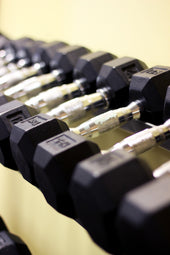
Hit the Gym or Stay at Home?
...
-
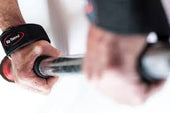
Weightlifting Benefits – Many Health Benefits for Men and Women
...
-

Crush Your PRs: The Gradual Strength Increase Guide for CrossFitters
...
-

Whey vs Collagen Protein: Which Is Best for You?
...
-

Can I Take Whey Protein Without Working Out? What You Need to Know
...
-

Why Does Whey Protein Hurt My Stomach: Causes and Solutions
...
-

Boost Your Run: Should You Take Pre-Workout Before Running?
...
-

Top Pre-Workout Benefits: Boost Energy and Enhance Performance
...
-
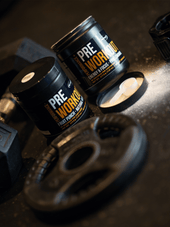
How Long Does Pre-Workout Take to Kick In? Find Out Here!
...
-

How Long Does Pre-Workout Last? Your Essential Guide
...
-

Does Pre-Workout Give You Pimples
...
-

How Long Does Pre-Workout Stay in Your System
...
-

When Should I Take Pre-Workout
...
-

Can I Mix Creatine With Pre-Workout
...
-

Long Term Side Effects of Pre-Workout Supplements
...
-

How Much Caffeine in Pre-Workout
...
-

Pre-Workout Alternatives
...
-

Does Pre-Workout Break a Fast
...
-

What to Eat Pre-Workout
...
-

What is In Pre-Workout
...
-

Advantages of Pre Workout Supplements
...
-

How To Get Rid Of Pre Workout Itch
...
-

How To Make Your Own Pre Workout
...
-

How Many Scoops Of Pre Workout Should I Take
...
-

How Bad Are Pre Workouts For You
...
-

How Long Before A Workout Should I Take Pre-Workout
...
-

How Much Caffeine Is In Bucked Up Pre Workout
...
-

How Long Does Pre Workout Increase Blood Pressure
...
-

What Does Pre Workout Do
...
-

Can I Use Sprite As Pre Workout
...
-

Can Supplements Boost Weightlifting Motivation
...
-

Why Do Weightlifters Wear Belts
...
-

Does Lifting Weights Cause Varicose Veins? What You Need to Know
...
-

Does Lifting Weights Affect Uterus Health? What Women Need to Know
...
-

How Lifting Weights Can Affect Your Sex Drive: Does Lifting Weights Make You Horny?
...
-

Why Don't I Sweat When I Lift Weights? Understanding the Causes
...
-

Why Are Physical Fitness Attitudes Important? Insights & Benefits
...
-

Why is Anytime Fitness So Expensive? Understanding Membership Costs
...
-

Substitute For Whey Protein Powder In Keto Baking
...
-

How Many Calories Does 1 Hour of Weightlifting Burn
...
-

A Guide To Cleaner Protein Supplementation
...
-

What Causes The Frothiness in Your Fitness Drink
...
-

How to Take Collagen Safely After a Gastric Bypass: Essential Tips
...
-

Why Do Protein Shakes Make Me Nauseous? Top Reasons and Solutions
...
-

Why Does My Stomach Hurt After Protein Shake? Understanding Your Digestive Discomfort
...
-

Can I Take Collagen After Gastric Bypass
...
-

Why Does My Protein Shake Foam
...
-

How Long to See Effects of Collagen
...
-

Can Diabetics Drink Protein Drinks
...
-

How Fast Should You Drink Protein Shakes
...
-

Can You Drink Protein Shakes While Fasting
...
-

Is Organic Protein Powder Good for Weight Loss
...
-

Can Wrist Wraps Boost Your Grip Strength in Weightlifting?
...
-

Should You Use Wrist Wraps for Bench Press and Overhead Press?
...
-

Do Wrist Wraps Help with Wrist Pain During Strength Training? Find Out Here
...
-

How Can Wrist Wraps Prevent Injury During Heavy Lifting?
...
-

How Do You Use Weightlifting Straps: A Simple Guide for Better Lifts
...
-

How to Pick a Lifting Belt: A Practical Guide for Every Lifter
...
-

How to Measure for Lifting Belt
...
-
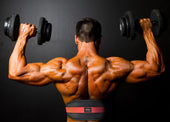
Do Weight Lifting Belts Help Lower Back Pain
...
-

Do I Need a Lifting Belt
...
-
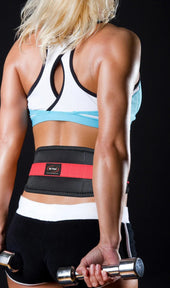
Purpose of Weight Lifting Belt
...
-

When to Use a Lifting Belt
...
-

What Does A Lifting Belt Do
...
-

What Do Wrist Wraps Do For Lifting
...
-
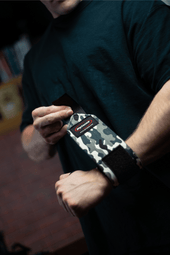
How To Wrap A Wrist For Carpal Tunnel
...
-

How To Wrap Wrist For Pain
...
-

What Are Wrist Wraps For
...
-

How Do You Use Weightlifting Straps
...
-

Why Is Mental Focus Important in Powerlifting? The Key to Peak Performance
...
-

Can Bodybuilding Help with Fat Loss? Discover Proven Benefits
...
-

Mastering the Basics: How to Improve Your Powerlifting Technique
...
-

Why Is Proper Form Crucial in Powerlifting? Tips for Safe and Effective Lifting
...
-

Can Powerlifting Increase Athletic Performance? Exploring Strength Gains and Sport Benefits
...
-

Top Tips on How to Avoid Common Injuries in Bodybuilding
...
-

Why Is Recovery Essential in Bodybuilding: Key Strategies and Benefits
...
-

Can Powerlifting Improve Overall Fitness? Explained
...
-

Why Is Nutrition Important in Bodybuilding? Top Reasons Explained
...
-

Can Fitness Habit Creation Lead to Long-Term Success? Here's What You Need to Know
...
-

How to Build a Consistent Weightlifting Routine
...
-

Can Fitness Habit Creation Lead to Long Term Success
...
-

Why Do Weightlifters Need A Strong Mindset
...
-

Can Weightlifting Improve Mental Resilience
...
-

Why is Determination Key in Weightlifting
...
-

How to Create a Fitness Habit That Lasts
...
-

How to Stay Motivated in Weightlifting
...
-

Weightlifting: Your Resilience Workout
...
-

How Does Weightlifting Build Resilience
...
-

Common Powerlifting Injuries
...
-

What is Raw Powerlifting
...
-

What to Eat Before a Powerlifting Meet
...
-

Is Powerlifting Bad for Your Heart
...
-

What is a Powerlifter
...
-

What is Powerlifting
...
-

Why Do Powerlifters Eat Candy
...
-

What Does RPE Mean In Powerlifting
...
-

What Do Powerlifters Sniff Before A Heavy Lift
...
-

Is A Belt Acceptable In A Powerlifting Meet
...
-

Can Powerlifting Build Muscle? Expert Insights and Tips
...
-

Why Are Powerlifters Fat? The Real Reasons Explained
...
-

The Best Guide to Powerlifting After Shoulder Replacement
...
-

Powerlifting vs Bodybuilding: Key Comparisons and Benefits
...
-
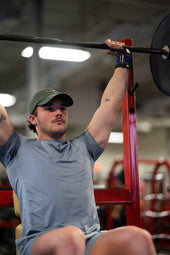
Unlock Your Potential: How to Get Stronger Gradually
...
-
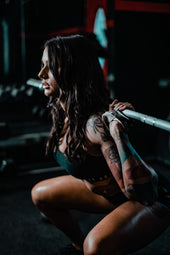
Unlock Muscle Growth: Understanding What Is the 6-12-25 Rule
...
-
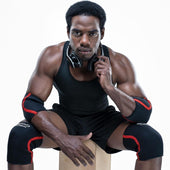
5 Lbs of Muscle in a Month? Let's Get Real
...
-
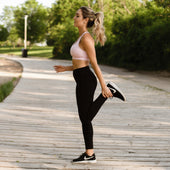
Get that celebrity booty in 10 easy to do work out routines
...
-
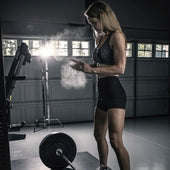
A.M. vs P.M. Workouts
...
-
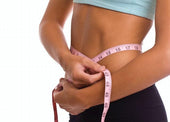
Fasting Do’s and Dont's
...
-

5 Surprising Sources of Protein
...
-
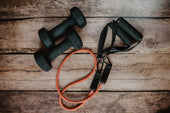
Home Workout Upgrade Must-haves
...
-
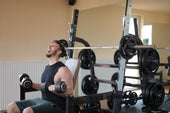
Top 5 Reasons You Aren’t Reaching Your Weightlifting Goals
...
-
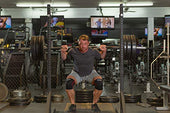
Squats: A Must in Weightlifting and for Strength Training
...
-
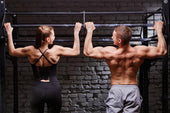
Weightlifting Routines for Men, Women and Beginners
...
